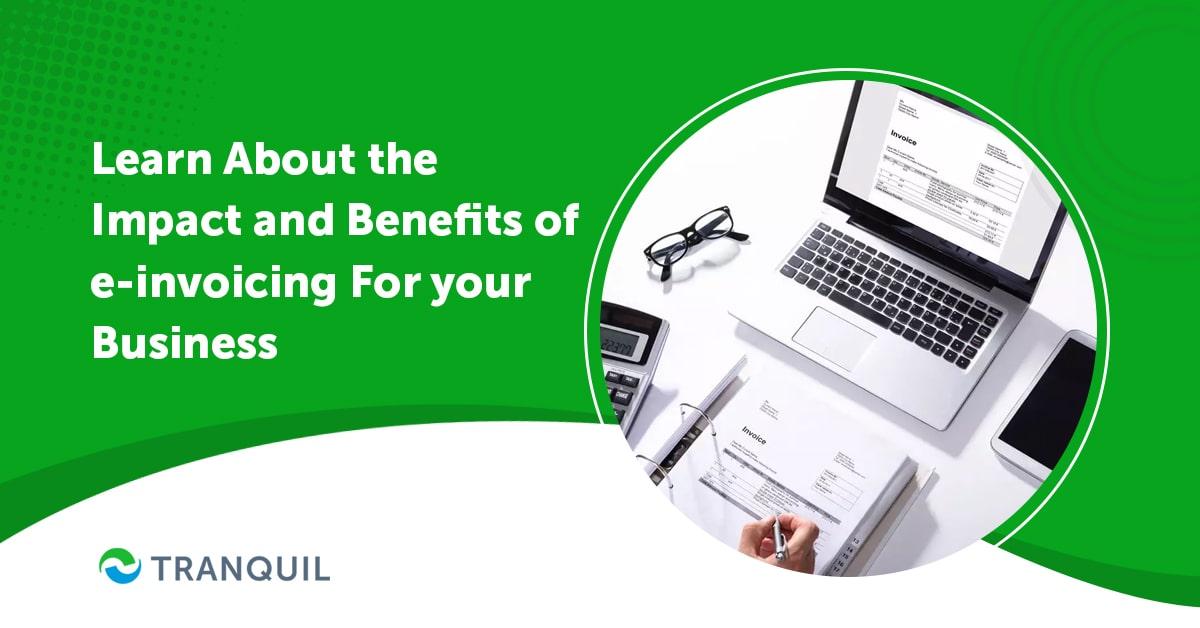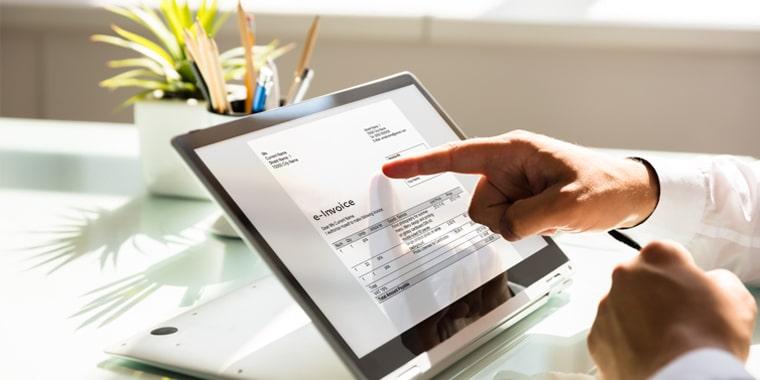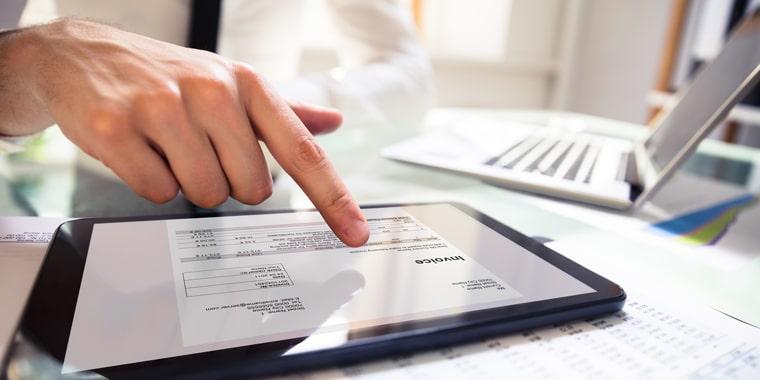
There is suddenly a lot of buzz about e-Invoicing, especially so in Saudi Arabia.
Before we learn the benefits of e-invoicing, let’s understand what it is, and why the authorities introduced it.
E-invoicing or electronic invoicing is simply a process where invoices are generated, issued, and stored digitally.
In KSA, the ZATCA, or the Zakat, Tax and Customs Authority announced the regulations that made it mandatory for businesses to shift to e-invoicing.
The process will be two-phased, with the first phase rolled out on December 4, 2021.
For those who pay VAT in KSA, the format of e-invoices will be similar to the VAT invoices issues but will be created online.
Scanning or copying a manual paper invoice will not be deemed to be an e-invoice.
It is not possible to alter an e-invoice after it is issued; however, electronic notes – debit or credit – can be issued.
These have to be electronically generated and must be compliant with VAT, and have to be issued referring to the e-invoice that was originally issued.
Let’s suppose your customer returned the product in full or part – you cannot edit the invoice, but you can issue debit or credit notes online.
All invoices and notes have to be issued through the e-invoicing system and have to adhere to ZATCA regulations.
This helps in the standardization of transactions and ensures that there is uniformity in everything.
It also ensures the secure storage of information.
E-Invoices have to be issued for domestic sales, exports from KSA to other nations, and for advance payment for the impending sale of goods and services.
Imports coming into KSA supplies are not subject to VAT and relevant payments, supplies liable to reverse charge procedure, etc., do not require e-invoice.
ALSO READ: What is Negative Inventory and How Can you Prevent it?

The primary purpose of e-invoicing is to help businesses function more securely and effectively.
The ultimate goal of this initiative is to incorporate business data of sellers with ZATCA; this will help bring in greater transparency and make trade seamless.
Invoices will be in a common format, easily read by machines; this helps standardization of reporting invoices to the system.
It will also help to stay up to date on transactions that are posted to the official portal. With the phasing out of hand-written invoices and storing paper, and authentication of all invoices on ZATCA’s portal, the authorities will be able to detect fake invoices and other fraudulent activities quickly.
A common database can also be created for audits, thanks to e-invoicing, helping tax authorities to reduce the frequency of conducting audits.
ALSO READ: What are Backorders and How to Manage or Avoid Them?

There are innumerable advantages of e-invoicing for taxpayers, and it’s important that you know what they are.
This will make it easier for you to accept the new system and adapt to it smoothly.
ALSO READ: What Are the Challenges Facing Purchasing and Supply Management?

It became mandatory for taxpayers to issue and store electronic invoices and notes in place of paper invoices and debit or credit notes from this date.
It became mandatory to implement an e-invoicing system with internet connectivity that complied with ZATCA.
E-invoicing software on your business computer, an online cash register, or a cloud-driven e-invoice solution – businesses can choose any of these systems.
When issuing electronic invoices, you must include every important element and compulsory fields of the tax invoice, like the name and VAT registration number of the seller, VAT total, overall amount of invoice including VAT, and time of issue of the invoice.
ALSO READ: What are the Challenges in ERP Implementation?
There will be the multi-stage implementation of this phase for different groups of taxpayers.
Business owners will need to integrate their e-invoice system with ZATCA, enabling the routing of generated e-invoices for verification and validation.
Different groups of people will have to affect the integration at different times; to smoothen the transition, ZATCA will inform you of your integration date 6 months prior to the date.
From that date, you will need to ensure that your e-invoices are issued in XML or PDF/A-3 with embedded XML or other specific formats as mandated by ZATCA.
This phase is also likely to have several technical requirements; all the more reason to implement a system that is compliant with ZATCA requirements.
It is necessary for your system to connect to outside systems via APIs and generate a UUID, a cryptographic stamp, a hash, a digital signature, and a unique sequential number for identification.
It should also have a built-in anti-tampering system.
ALSO READ: Benefits Of Software As A Service

Tax e-invoices are necessary for all B2G and B2B transactions and are normally used by buyers to claim input VAT deduction.
While it was necessary for phase 1 that e-invoices be issued to buyers in the stipulated format, the e-invoices in phase 2 can be issued to buyers only after ZATCA clears and affixes the cryptographic stamp on them.
Buyers with VAT registration will need to have their registration number also printed on the invoice; you can choose to include a QR code as well.
These are issued at the POS in B2C transactions; with these, the buyer doesn’t require to use the invoice to deduct input VAT.
It is mandatory to generate a QR code in the simplified B2C e-invoice, as it helps invalidation.
In the second phase, within 24 hours of the issue of the e-invoice, you need to report it to ZATCA.
Both types of e-invoices can be billed by yourself if the tax authority has approved it, or by a third party.
Regardless of who bills it, you as the seller will be responsible for the accuracy of details in the generated e-invoice.
An electronic marker on the invoice specifies if the invoice is self-billed or third-party billed.
ALSO READ: How ERP Software is Playing Role to Improve Business Productivity?
Taxable goods and services of SAR 1,000 and above sold to the taxable or non-taxable legal individual – standard e-invoice
Taxable goods and services apart from exports of value under SAR 1,000 sold to the taxable or non-taxable legal individual – standard or simplified
Taxable goods and services apart from exports sold to non-taxable persons – simplified e-invoice
Zero-rated supplies sold to the taxable or non-taxable legal individual of value SAR 1,000 or above – standard e-invoice.
For export of goods, supply within GCC region, and nominal supplies not issued to the customer, standard e-invoices apply.
ALSO READ: Influence and Importance of ERP System in Different Industries

The E-invoicing process is similar to the normal process, only that it’s more secure and efficient.
Implement a system compliant with ZATCA to generate e-invoices with the necessary fields, and send a copy to your customer.
Once you are included in phase 2, route the invoice to the ZATCA portal for validation before issuing it to your customer.
Store the e-invoice in your system for future purposes, and implement a cloud-driven system that offers simplified and automatic compliance.
Don’t choose a system with:
At Tranquil, we have smart accounting software and an e-invoicing platform that is approved by ZATCA, making it simple for you to switch to e-invoicing. Go paperless, and ensure compliance with ZATCA regulations with our cutting-edge e-invoicing software. Contact us for a demo and to know more.